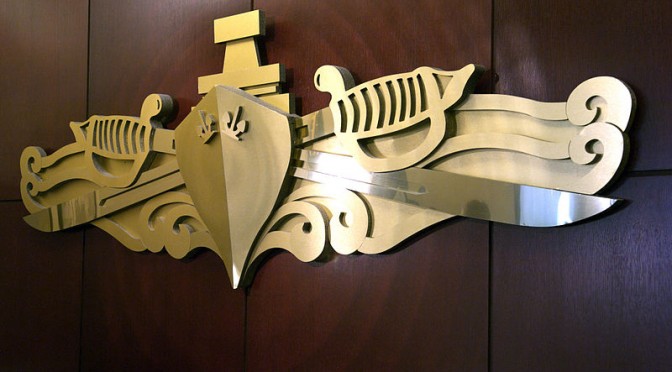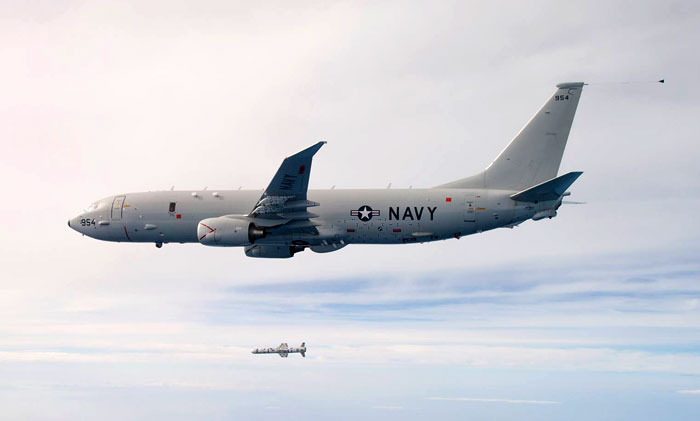By Steve Wills
Surface fleet leadership engaged in a number of innovation attempts beginning in the 1970s and culminating with the commissioning of the Basic and Advanced Division Officer Courses (BDOC) program in 2012. Nevertheless, not all of these attempts were well-thought out. One of these missteps was the high profile closing of the Surface Warfare Officer School Division Officers Course (SWOSDOC) in 2003. This change appears to have come from a misguided desire to decrease personnel costs, improve the flow of officers from commissioning source to the fleet, improve retention of Surface Warfare officers, and appear to innovate within the zeitgeist of the “transformation” movement of the early and mid 2000’s. SWOSDOC was replaced by a program of computer-based training (CBT) in which prospective Surface Warfare Officers (SWOs) transited directly from disparate commissioning sources directly to their first ships. This effort proved a failure and was gradually replaced through a return to formalized schoolhouse-based training. In 2012, the CBT method was terminated and replaced by more traditional Basic and Advanced Division Officer Courses (BDOC and ADOC) held in two segments before and after the prospective SWO’s first division officer tour. An analysis of this innovation failure is a cautionary tale for those debating or implementing reform. It appears that the objectives that motivated the would-be reformers were erroneous, short-sighted, and could have been avoided by a careful understanding of the history of surface warfare training.
A Short History of Surface Warfare Training
“Plowing Ahead through Rough Seas”
Surface Warfare training has historically been a journeyman process in which a new officer reporting to his or her first ship remains in a probationary status until evaluated by his or her peers and superiors, most importantly their commanding officer (CO), for competency and professional qualification. Prior to the start of the Second World War, nearly all officers came from the United States Naval Academy (USNA). However, by the war’s end reserve officers commissioned for war service outnumbered regular officers (nearly all USNA graduates), by a factor of nearly 5.5 to 1.[i] Following[ii] the war, a need to maintain a larger peacetime force demanded a larger pool of officer accessions than the USNA could provide, and officers from Naval Reserve Officer Training Corps (NROTC) and Officer Candidate School (OCS) continued to supply the fleet with larger percentages of newly commissioned officers.
The Navy also began to embrace technological advancements at an accelerated effort in the surface fleet that required greater competency in newly commissioned officers (ensigns). The submarine and aviation communities had been confronted by advanced technologies beyond the scope of USNA training from their inception, and had instituted professional courses of instruction to train and qualify their officers for service in submarines and aircraft. By the mid-Cold War, technological advancements such as radar, sonar, and data processing networks such as the Naval Tactical Data System (NTDS) had significantly affected the surface fleet.
The training program for postwar surface officers in the late 1940’s and 1950’s had not kept pace with technological advance. Evidence from the period suggests that few professional training courses were available once an officer commissioned. Unlike USNA graduates, those coming from civilian colleges via the NROTC program did not have extensive professional training, but were expected to fulfill significant duties. Future Vice Chairman of the Joint Chiefs of Staff, Admiral David S. Jeremiah, reported to his first ship in 1956 after graduation from the University of Oregon and found himself qualified as Officer of the Deck (OOD) after standing only three under instruction watches.[iii] One Captain told an NTDS project officer aboard his ship for testing that, “No damn computer was going to tell him what to do, and for sure, no damned computer was going to fire his missiles (which it would not do in any case).”[iv] In such a climate of fear and resistance it became readily apparent that additional professional training would be required by surface officers in order to maximize the operational capabilities of the new weapons, sensors and associated data link equipment.
The Naval Destroyer Officers School, the forefather of the present Surface Warfare Officers School Command, was commissioned in July 1961 at Newport, RI with support from then-Chief of Naval Operations (CNO), and surface warfare officer, Admiral Arleigh Burke.[v] Its mission was “to improve combat readiness and tactical knowledge for junior naval officers on all ships.”[vi] The first focus was on training Heads of Department, for which no specific training program existed before the establishment of the Destroyer School despite their vast responsibilities.[vii]
The success of the Destroyer School prompted calls from the fleet for a similar course designed to provide similar training to new division officers before they reported to their first ships. A 1965 Naval Institute Proceedings article by Lieutenant (junior grade) Roy C. Smith IV highlighted the problems facing the newly commissioned officer on a contemporary warship. Smith wrote, “Being a “professional” in the Navy of the present day requires a more-than-working knowledge of advanced, ever-changing engineering, weapons, and electronic systems; complicated tactical and operational procedures; and a sound foundation in the increasingly more horrifying naval administrative structure.”[viii] He added that a formalized course would be more desirable than the present situation where officers spent, “between six and twelve months out of their first four years of service attending courses to provide some specific skill” and that “a six month school at the beginning of an officer’s career would have the benefit of both providing a better trained officer and reducing the need for the smaller skill specific schools.”[ix]
The First Surface Warfare Division Officer School class began in September 1970 as a pilot program with 24 officers.[x] Its genesis was largely due to the efforts of the revolutionary CNO Admiral Elmo Zumwalt. Zumwalt was concerned about surface officer retention and founded a number of warfare-based junior officer retention groups soon after assuming the office of CNO. These groups reported their findings to the CNO in person and those of the surface group were especially incisive. It made over 100 recommendations including “more rigorous standards, better schooling, and a surface warfare pin equivalent to the dolphins worn by submariners or the wings by the aviators.”[xi] Zumwalt acted immediately on these recommendations as surface warfare junior officer retention was a paltry 14% in 1970.[xii] The CNO had the Bureau of Naval Personnel (BUPERS) create a Surface Warfare designator in April 1970, and revised the SWO qualification process the following year to include a mandatory year of service on their ship before new officers could attain the SWO qualification.[xiii] The surface warfare breast insignia followed in November 1974.[xiv] An All Hands magazine article from March 1975 described the goal of the new Surface Warfare Officers School Command (SWOSCOLCOM) as “to train junior officers so that they can be fully productive from the moment they board their first ship… The curriculum at the school leans heavily on practical work and focuses on knowledge required by the junior surface warfare officer in fulfilling his role as junior officer of the watch, CIC watch officer and division officer.”[xv]
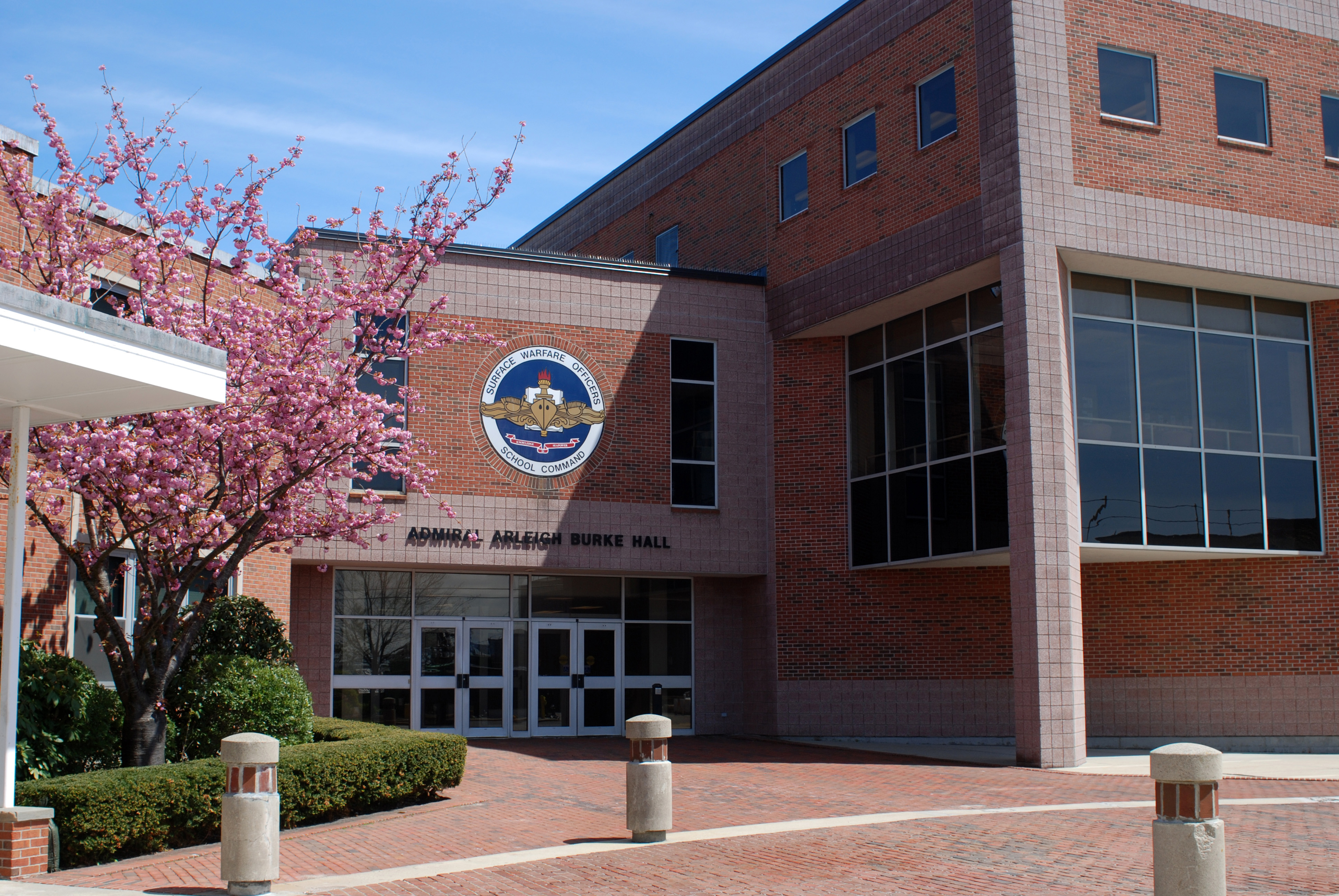
The evolution of the surface warfare training program and associated designator was based on the idea that advances in technology, changes in U.S. society brought about by the war in Vietnam, and low retention of surface officers required defined, measurable professional training. Admirals Burke and Zumwalt, as well as other surface officers understood that the best way to address these problems was through a professional training program, and that the age-old, journeyman program of naval officer qualification was not the best path moving forward into the last quarter of the 20th century.
A Radical Course Change
“A hard left rudder in increasingly heavy seas”
The perception of SWOSCOLCOM as the surface warfare center of excellence began to slip somewhat in the late 1980’s following the damage incurred by the frigates USS Stark and USS Samuel B. Roberts as a result of battle damage and casualties they sustained in missile attacks and mine strikes (respectively). A December 1987 Proceedings article by CAPT John Byron, a diesel submarine officer, condemned SWOS unfairly in the eyes of many surface officers by stating that “the surface navy was not ready for combat… all of the Stark’s officers had attended the course,” and that SWOS itself was somehow guilty by association in that dereliction in training.[xvi] A number of officers responded to CAPT Byron’s complaints, notably CDR R. Robinson Harris who pointed out that only the very best officers were detailed to head SWO training and that many, if not most COs of the Surface Warfare School were selected for Flag.[xvii]
Surface warfare retention also began to slide in the wake of the end of the Cold War. A 2001 Junior Officer survey stated that only 33% of current SWO junior officers planned to remain in the community past their initial obligation.[xviii] The survey also revealed that only 43% of SWO junior officers aspired to rise to command of their own ship, which survey takers thought indicated a lack of professionalism.[xix] Some graduates of the basic SWOS course reported that the school was too long, many of the course instructors completed hour-long courses in twenty minutes and that the quality of instruction was poor.[xx] A SWOSCOLCOM study of the SWOS basic class of 1998 also revealed that it took on average 17 months from arrival on-board their first ship until an officer completed the requirements for the surface warfare designator.[xxi] Some Commanding Officers reported that this length of qualification meant that they only had qualified first tour division officers for a few months before they rotated to their second tours. This combination of weakened retention, lack of community pride, and a lengthy SWO pin training period strongly motivated surface warfare leaders of the early 2000’s to significantly re-think how surface warfare training should be conducted.
The solution to these problems, as well as the additional costs involved in moving new ensigns to Newport and from there to their new duty stations, was a radical shift to computer-based training (CBT). Instead of attending SWOS and associated billet specialty programs for upwards of 12-14 months before reporting to their first ship, new officers would now report directly to their ships with a packet of computer disks from which they would instead be trained by their own ship’s officers. CBT was designed around cutting costs, improving retention via efficiency and increasing the number of warfare-qualified officers aboard ships. It was expected that the SWOS school command could save upwards of $15 million dollars a year in training costs by moving division officer training from the classrooms in Newport to a shipboard environment.[xxii] Retention was expected to improve though this new system, although no scientific studies or predictions were given as to how this might be achieved. Instead, cost savings were projected for even miniscule retention improvements, and these alone were touted as good reason for adopting the proposed training change.[xxiii] The fact that there were always a number of officers forced to become SWOs due to attrition from other warfare training programs was not addressed in the survey effort.
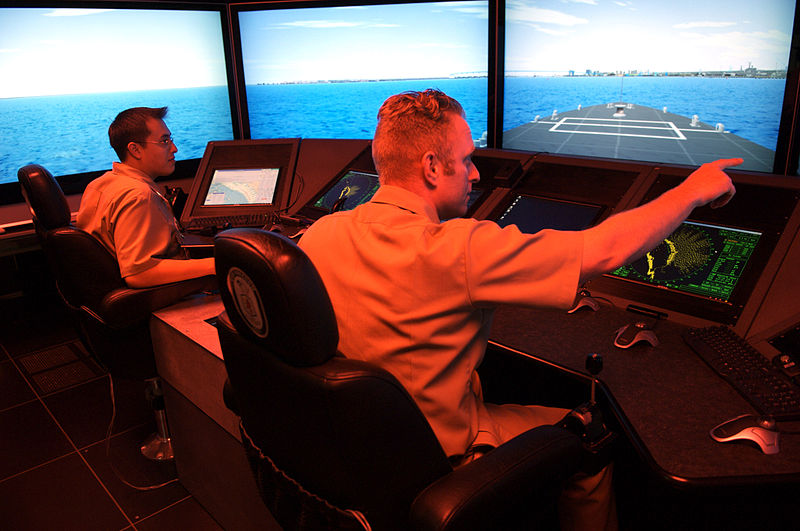
Even studies advocating this change postulated significant potential problems with a CBT approach to surface warfare division officer training such as: quality of instruction at commissioning sources would need to be improved, midshipman training cruises would need to be more formalized with specific qualification goals, and some billets supported by schools in Newport such as Damage Control Assistant (DCA) and Information Systems/Communications Officer might be lost to surface officers and transferred to limited duty officers (LDOs).[xxiv] All of these changes were brought about based on a limited number of inputs, specifically retention, training costs, and several select surveys of junior officers. The issue of professional quality in training was addressed in a manner that suggested experience at sea would always be superior to that of classroom training ashore.
The change was made in 2003 when then-Commander Naval Surface Force Pacific Fleet Vice Admiral Timothy LaFleur described the change as one that would “result in higher professional satisfaction, increase the return on investment during the first division officer tour, and free up more career time downstream.”[xxv] First tour division officers would still go to SWOS at Newport, RI, but at a point about six months into their assignment and for only four to six (later reduced to three) weeks in a kind of “finishing school” designed to test their knowledge just after their expected qualification as Officer of the Deck (OOD) underway. This change would have significant negative effects moving forward into the decade.
Problems with Computer-Based Training
“Mind Your Helm!”
The shift in initial surface warfare officer training from an ashore, classroom-based setting to an afloat, ship based environment did not go nearly as well as planned. By 2009, one Naval Postgraduate School (NPS) Study on the change frankly stated, “The new program may not be working as well as intended.”[xxvi] The NPS study interviewed 733 students from 12 different SWOS “finishing classes.” All of these students took a pretest to measure their knowledge upon reporting to Newport for the three week course.[xxvii] It identified seven significant shortfalls in the CBT program. Officers assigned to combatant warships (cruisers, destroyers and frigates, commonly referred to as CRUDES in the service) did better than those assigned to amphibious warships and other classes of ships. Those ships assigned to Atlantic Fleet units did worse than other geographic areas. Naval Academy graduates did worse than those from NROTC and Officer Candidate School (OCS). An officer’s undergraduate performance was mirrored in his or her performance on the test. Graduates with technical majors did better on the test than did non-technical undergraduate majors. Women had significantly lower grades than men. Finally, racial and ethnic and racial minorities did not do as well as their white counterparts.[xxviii] Nevertheless, crucially, the researchers who carried out the test found that nearly all of these score disparities disappeared when all students were provided face to face, traditional classroom training.
The researchers also suggested that there were a number of pre-existing studies (before 2003) suggesting that a switch to computer-based training in order to save money was fraught with negative effects, especially a drop in the quality of instruction. The survey noted that the Navy CBT program was designed to take place in an environment where the trainee had a full time job as a division officer at sea, an environment not well-studied enough for such a dramatic training change in the opinion of the researchers.[xxix] The quality and quantity of mentoring and support to the shipboard students from the other officers aboard the students’ ships varied widely. The students surveyed generally had a negative opinion of the change. They felt ill-prepared to lead their divisions and preferred face to face as opposed to computer-based training. Worst of all, many CBT students thought the change in training made them feel less valued and professional in comparison with other unrestricted line communities.[xxx]
There was an abundance of negative reaction to the CBT program from its inception to its demise. One captain bluntly stated, “No other first-rate Navy in the world pushes newly commissioned officers out the door and directly to combatants without the benefit of formal training or underway familiarization.”[xxxi] Another felt the commanding officers would need to be more involved as the principal instructor aboard their ships as opposed to the safety observer. He stated, “For complex evolutions, like mooring to a buoy, towing, division tactics, or helo operations while in formation, a Commanding Officer is no longer able to act as a removed, above-the-fray safety observer. Instead, he has to become closely and intimately involved in solving any problems. He becomes very much like the Officer of the Deck, himself.”[xxxii]
Graduates of the new program also wrote about their unfavorable experiences. One lieutenant who completed the program condemned the idea that an officer could successfully teach herself the basics of being a Surface Warfare Officer while simultaneously leading a shipboard division. She also dismissed the three-week division officer course conducted at the end of her first division officer tour. It contained information that she should have known before reporting to her ship, and its short length, crammed with too much information was a needless, “ trial by fire” when “We have the ability and the money to set up our division officers for success.”[xxxiii]
The Navy Returns to Traditional Means of Surface Warfare Division Officer Instruction
“Shift your rudder”
The steady drumbeat of criticism from the fleet made an impact with surface warfare leadership. Commander, Naval Surface Forces Atlantic Fleet, Vice Admiral Derwood Curtis restored a modicum of traditional surface warfare classroom training with the establishment of a four week course at Newport for new ensigns before reporting to their first ships entitled “SWO INTRO.”[xxxiv] The class was specifically designed to teach “3M, division officer fundamentals, basic watchstanding and leadership.” In an interview on the now defunct SWONET internet site, Curtis said, “Some ensigns were coming to our ships not ready to perform.”[xxxv] Fleet Forces Commander Admiral John Harvey, himself a surface warfare officer, condemned the CBT program as a “flat-out failure” during a 2010 House Armed Services Committee Hearing (HASC) on fleet readiness. Admiral Harvey went on to say that the Navy had erred in sending prospective SWOs to sea unprepared and placing the burden of their training on commanding officers who “have already got a few other things to worry about.”[xxxvi]
The surface navy took another step closer to returning to the pre-2003 SWOS Division Officer course by standing up the Basic Division Officer Course (BDOC) in October 2012. The written record is more scarce on the reasons for this change, but a combination of the problems identified by Admiral Harvey in his 2010 testimony, rising naval capabilities in China, and a need to restore warfare competencies that had atrophied over the period of the post-Cold War likely required a return to more formal, professional surface warfare instruction. Some independent writers have suggested that the retreat from formal classroom instruction made the surface navy appear less professional in comparison with the aviation, submarine, nuclear power, and naval special warfare communities.[xxxvii] These other warfare disciplines have training elements that deliver qualified or nearly qualified officers when they report to their first fleet assignment. Even with the return of BDOC, the surface community instead delivers an officer that is ready to train vice a trained officer “ready to drive and fight at the pointy-end from the moment they cross the brow.”[xxxviii]

What does the History of Surface Warfare Training Say about Innovation?
“Captain, We Steamed Over Our Own Towline!”
The commissioning of BDOC in October 2012 would seem to complete a circle of innovative effort that began over fifty years earlier with the founding of the original Destroyer School for Department Head students at Newport in 1961. Surface Forces Commander Vice Admiral Thomas Copeman’s convocation speech for the first BDOC course reflected the basic need for the school. He said, “The surface warfare business we are in is very challenging. Our ships are complicated. They are the most technologically complex machines that this country has built and it takes a lot of hard work to learn how to fight them, learn how to maintain them, and learn how to train Sailors to maintain them.”[xxxix] Vice Admiral Copeman’s remarks are very similar to those of Rear Admiral Charles Weakley, Commander Destroyer Force Atlantic Fleet, whose charge to the new Destroyer School in 1961 was “to provide the destroyer force, through a system of functional education and training, with officers professionally qualified and motivated to function as effective naval leaders on board ship.”[xl] The Navy must avoid similarly counterproductive innovative activity as it strives to create a culture of innovation in the 21st century.
It is imperative that those reviewing the proposed change know the empirical history of the subject in question. A short review of historical material readily available in 2003 might have suggested that the Navy created a classroom training program in 1961 because the traditional, journeyman practice of training surface naval officers was deemed inadequate in light of advanced technology, the faster pace of operations, and greater complexity of naval warfare in the 1960’s. Similar conditions involving new technology and complexities of modern, joint warfare existed in 2003. Instead of following past, proven practices, the navy opted for a hypothetical, untested solution in order to cut costs and appear “transformational,”the “flavor of the day” in the early 2000’s. History may not always hold an exact answer, but it sometimes provides additional insight and clarity for those engaged in the evaluation of a new concept.
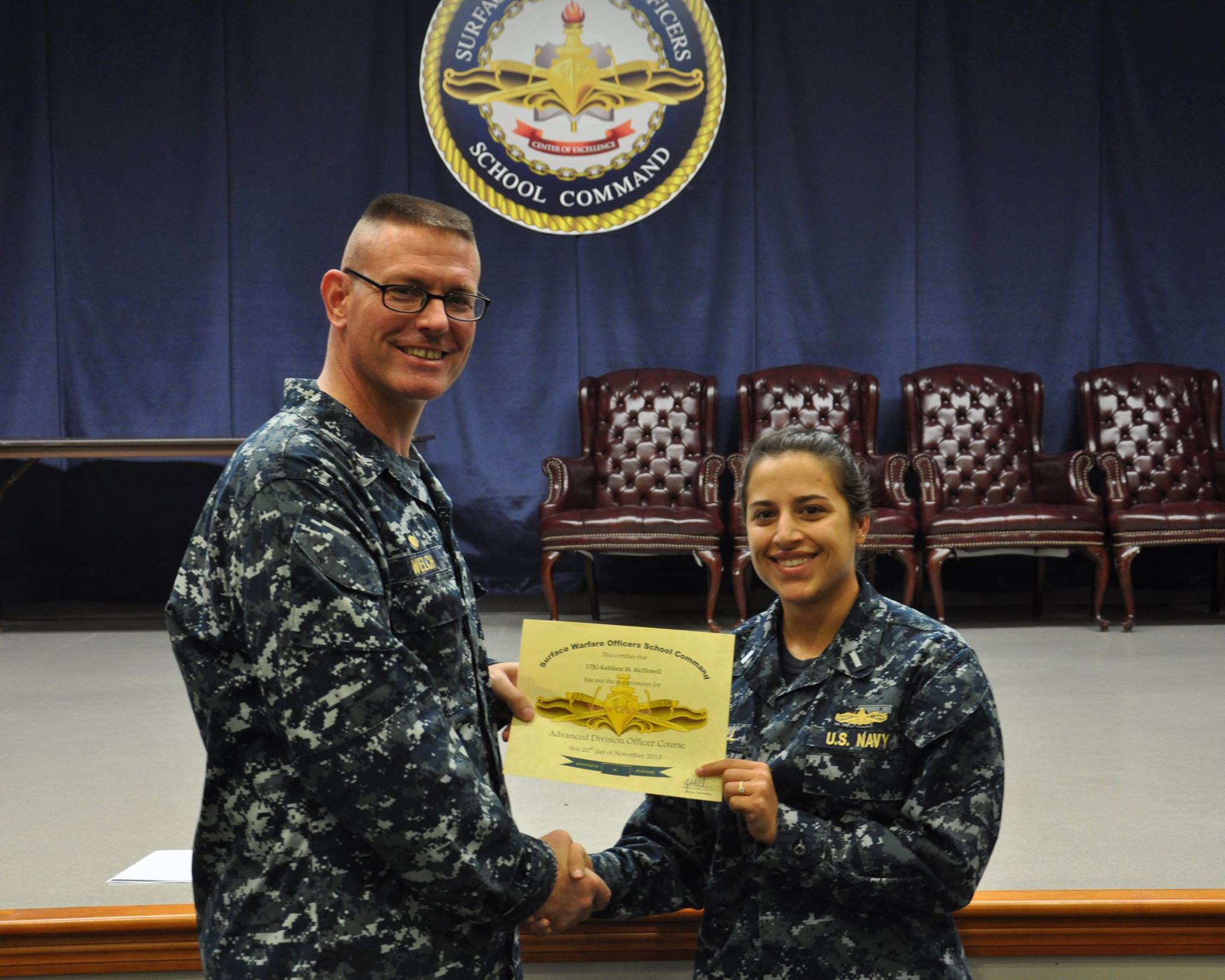
Data from surveys is an important component to any decision on innovation, but such inputs need to be broad before making significant change. Admiral Zumwalt carried out similar surveys in 1970 to those carried out in the early 2000’s regarding surface warfare training and retention of surface warfare officers. In both periods Navy leadership identified retention as a key issue, but the 1970’s era response offered a variety of measures designed to improve retention while advancing professionalism. The changes in the early 2000’s appear to have been driven by a desire to reduce expenditures on travel and assignment to Newport, with a secondary goal in improved retention and education of surface warfare officers. There was hope that professionalism could be maintained, but how this was to be achieved in a demanding operational climate aboard ship was not given adequate attention. Those authors of the 1970’s era initiatives were junior officers from Admiral Zumwalt’s survey groups. Those of the 2000’s were largely civilian analysts who had not served aboard a U.S. Navy warship and could not be wholly conversant with the shipboard culture they proposed to radically alter.[xli] While outsiders sometimes view systemtic problems with clarity, their views must be balanced by insiders who can ensure durable, effective solutions are undertaken. This was not the case in the SWO training shift of 2003.
Finally, changes undertaken with the principal goal of saving money or hurrying a process are fraught with danger. The overriding pressure to achieve financial or time savings threatens to overtake innovative ideas and turn them into quick-fix vehicles for the achievement of specific goals. The 2000’s era changes to the surface warfare training program started with cost and time reduction, not the maintenance or professionalism or retention, as their primary entering argument. Surface warfare training traditionally contained a combination of formalized classroom instruction and practical application of those skills in evolutions at sea in order to produce a qualified surface warfare officer. The move to computer-based training assumed that the practical underway training could be replaced through simulation. A 2003 RAND study cited as one in favor of CBT began as follows:
“Recently, however, a combination of economic, operational, and political changes has prompted the Navy to consider shifting the balance toward more shore-based training. The high cost of underway training, the increased operational tempo, reduced access to training ranges, and other factors have decreased the attractiveness of underway training.”[xlii] (bold added for emphasis)
If simulation could serve as an effective replacement for complicated underway training, it is not surprising that the navy determined that a shore-based program like the Basic SWOS school that was labeled “uneconomic” could also be replaced by a CBT program. It was just another example of economy being deemed more important than the maintenance of professionalism in the minds of naval training leadership.
The 2002 NPS thesis on the Sea to SWOS program initiative stated that retention was the primary goal, but all eight benefits listed from the proposed change were financial rather than professional or operational in character.[xliii] The professional goals were more of an afterthought than a guiding principle. There was also a belief in the surface navy in the late 1990’s and early 2000’s that any problem might be solved if enough computers could be mobilized in response, although this point requires more than the anecdotal evidence available.[xliv]
The case of surface warfare officer training suggests that the history file ought to be the first stop for anyone engaged in the review and approval of innovative ideas. Those engaged in the planning and approval of the new computer-based surface warfare training program should have reviewed past surface warfare training initiatives and experiences before radically returning the fleet to a journeyman culture. The history clearly suggested that a fast-paced operational environment, with complex technologies and evolutions was no place to send untrained officers.
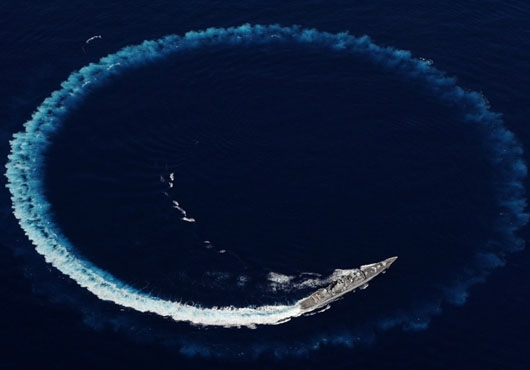
Failures in innovation can also serve as harbingers of deeper problems. It is not surprising that this degradation in training occurred within the same decade labeled by the Balisle Report as one of multiple failures in a “circle of readiness” that included training, manning, and material conditions in the surface fleet. [xlv] While it took nearly a decade for the problems in material conditions within the surface fleet to manifest themselves to higher authority, shortcomings in junior officer training were readily apparent in less than five years.
History is often ignored or given little regard by the operational navy. One of the author’s mentors once told him that, “history gets a paragraph, even in a historical analysis, before facts and figures assume their usual commanding position.” It is perhaps time for the fleet to invest more in the examination of our past before embarking on what it perceives to be new and innovative concepts. The navy must endeavor to avoid future, needless circles of effort such as the surface warfare training debacle of the last decade by examining our previous failures and follies.
Steve Wills is a retired surface warfare officer and a PhD candidate in military history at Ohio University. His focus areas are modern U.S. naval and military reorganization efforts and British naval strategy and policy from 1889-1941.
[i] James Robinson, “Initial Training of Surface Warfare Officers. A Historical Perspective from World War 2 to 2008”, Leavenworth, KS, U.S. Army Command and Staff College (Master’s Thesis), 2008, p. 10.
[iv] David L. Bouslaugh, When Computers Went to Sea, The Digitalization of the United States Navy, Los Alamitos, CA, IEEE Computer Society press, p. 243.
[v] http://www.public.navy.mil/surfor/Pages/SurfaceWarfareOfficerSchool.aspx#.VZVhIFLuMSU, last retrived 02 July 2015.
[xi] Malcolm Muir, Jr. Black Shoes and Blue Water: Surface Warfare in the United States Navy, 1945-1975. Washington D.C., Naval Historical Center, 1996, p. 224.
[xiv] http://www.navy.mil/ah_online/archpdf/ah197503.pdf, p. 12.
[xvii] Christopher Galvino, “Cost Effectiveness Analysis of the “Sea to SWOS” Training Initiative on the Surface
Warfare Officer Qualification Process”, Monterey, CA, The Naval Postgraduate School, December 2002, p. 2.
[xxvi] Bowman, William R, Crawford, Alice M, and Mehay, Stephen, “An Assessment of the Effectiveness of Computer-Based Training for Newly Commissioned Surface Warfare Division Officers”, Monterey, CA, Naval Postgraduate School, 24 August, 2009, p. ix.
[xxviii] Ibid, p. xi.
[xxxi] Stephen. F Davis., Jr., “Building the Next Nelson”. United States Naval Institute.
Proceedings. Annapolis: Jan 2007. Vol. 133, Iss. 1; pg. 1.
[xxxii]Kevin S. J. Eyer, “On the Care and Feeding of Young SWOs”. United States Naval
Institute. Proceedings. Annapolis: Jan 2009. Vol. 135, Iss. 1; pg. 51, 4 pgs.
[xxxvi] Admiral John Harvey, Testimony before House Armed Services Committee, Subcommittee on Sea Power and Expeditionary Forces, One Hundred Eleventh Congress, Second Session, Washington D.C., U.S. Government Printing Office, 28 Jul 2010.
[xxxvii] Jon Paris, “The Virtue of Being a Generalist; Part 3, Viper and Pitfalls of Good Enough”, The Center for International Maritime Security (CIMSEC), NEXTWAR blog, 19 August 2014, https://cimsec.org/virtue-generalist-part-3-viper-pitfalls-good-enough/12575
[xxxviii] Jon Paris, “The Virtue of Being a Generalist; Part 2, Are all Nuggets Created Equal?” Center for International Maritime Security (CIMSEC), NEXTWAR blog, 15 August 2014, https://cimsec.org/virtue-generalist-part-2-nuggets-created-equal/12200
[xxxix] Steven Gonzales, “SWOS Launches New Basic Division Officer Course”, Washington D.C., Chief of Naval Information Press Release, 03 October, 2012, file:///I:/SWOS/SWOS%20Launches%20New%20Basic%20Division%20Officer%20Course.htm
[xl] Michele Poole, “Building Surface Warriors”, Annapolis, MD, United States Naval Institute Proceedings, May 1998, Volume 124/3/1. 143, http://www.usni.org/magazines/proceedings/1998-05/building-surface-warriors
[xli] file:///I:/SWOS/Navy%20Re-Engineers%20Surface%20Warfare%20Training.htm
[xlii] Roland J. Yardley, Harry J. Thie, John F. Schank, Jolene Galegher, and Jessie L. Riposo, “Use of Simulation for Training in the U.S. Navy Surface Force”, Washington D.C., Research and Development Corporation, 2003, p. iii.
[xliv] Jack Dorsey, “Navy Equips 2000 Officers with Palm V Hand Held Computers”, Virginia Beach, VA, The Virginian-Pilot, 2000. http://www.siliconinvestor.com/readreplies.aspx?msgid=12862250
[xlv] Philip J. Balisle, “Fleet Review Panel of Surface Force Readiness,” Norfolk, VA and San Diego, CA, Commander Fleet Forces Command and Commander, Pacific Fleet, 26 February 2010, pp. 4, 5.

